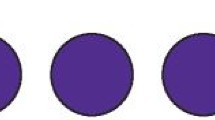Abstract
This study was designed to determine how dentists would manage carious lesions of differing severity and whether they would consider using non-invasive methods to manage lesions which were not severe enough to require a restoration. A group of 211 general dental practitioners were interviewed and asked to identify the point at which they would provide restorative treatment in a 12-year-old patient from a list of descriptions of lesions affecting buccal/lingual, occlusal and approximal surfaces. They were then asked how they would manage lesions which they would not restore. Most of the dentists said they would attempt to use some form of active non-invasive management technique. Principal among these would be teaching the patient how to maintain their oral hygiene and giving them dietary advice. The majority also felt that fluoride varnish or gel would help control a buccal or lingual surface lesion and that placement of a fissure sealant without any mechanical removal of tooth tissue would be a satisfactory way to control a lesion affecting an occlusal surface. The findings support the view that it may be useful to classify caries into two types: lesions for which preventive care is advised (PCA) or lesions for which operative care is advised (OCA)
Similar content being viewed by others
Article PDF
Rights and permissions
About this article
Cite this article
Nuttall, N., Fyffe, H. & Pitts, N. Caries management strategies used by a group of Scottish dentists. Br Dent J 176, 373–378 (1994). https://doi.org/10.1038/sj.bdj.4808461
Published:
Issue Date:
DOI: https://doi.org/10.1038/sj.bdj.4808461



